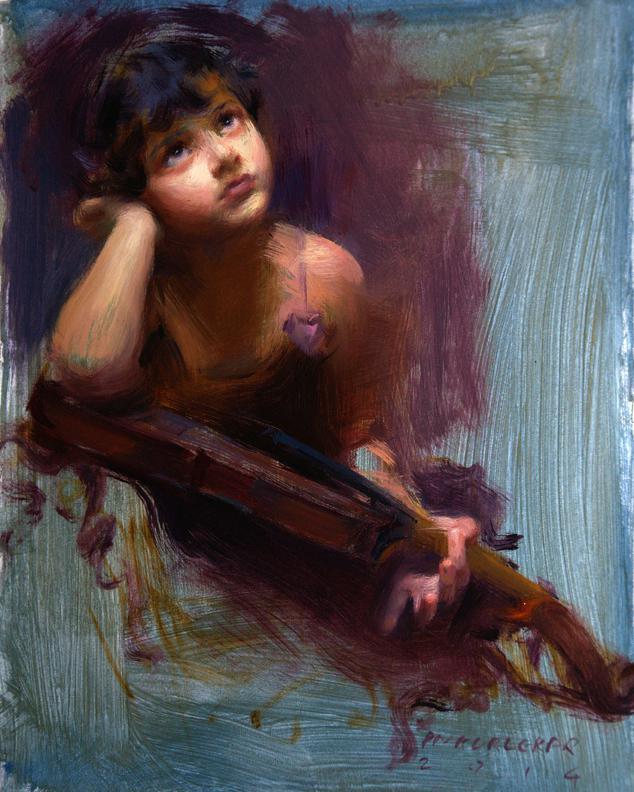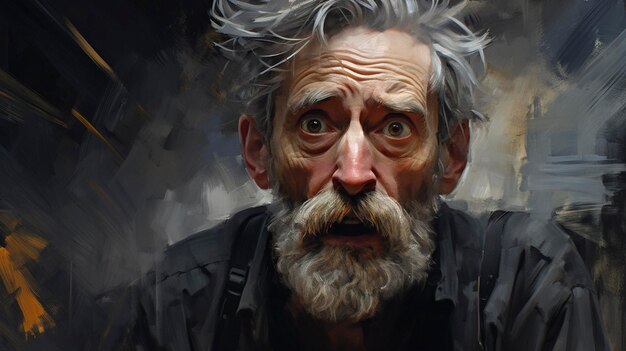The Advancement of Metaphorical Oil Painting: Understanding Its Historic Importance and Modern Interpretations
The evolution of figurative oil paint offers as a compelling lens through which to check out the interplay between creative expression and historical context. Contemporary musicians, attracting from this rich heritage, are now reinterpreting the human figure in ways that test traditional narratives.
Beginnings of Metaphorical Oil Painting
The beginnings of figurative oil painting can be mapped back to the very early Renaissance in Europe, particularly in the 15th century. The growth of oil paint permitted for greater depth of shade and information, enhancing the realistic look and vibrancy of their work.

In this transformative era, figures were usually depicted within contextually rich settings, showcasing not only their physical attributes however also their psychological states. Leaders such as Jan van Eyck and Titian utilized the tool's convenience, utilizing layering strategies to achieve luminosity and structure. This advancement promoted the representation of intricate textiles and the nuances of complexion, adding to the development of portraiture and narrative scenes.
Additionally, the Renaissance emphasis on humanism cultivated a gratitude for uniqueness, which in turn influenced musicians to create more dynamic and relatable numbers - figurative oil painting. Therefore, metaphorical oil painting became an effective lorry for narration and emotional interaction, laying the foundation for future imaginative motions and designs
Key Historical Motions
Significant historical movements have shaped the evolution of figurative oil painting, each contributing one-of-a-kind ideologies and techniques that broadened the medium's possibilities. The Renaissance marked a turning point, stressing realism and the human form, with musicians like Leonardo da Vinci and Michelangelo pushing the boundaries of anatomical accuracy and point of view. Following this, the Baroque age brought dramatic contrasts of light and darkness, exemplified by Caravaggio, that infused spiritual styles with extreme emotionality.
The 19th century presented Romanticism and Realistic look, where artists such as Delacroix and Courbet challenged classical perfects, concentrating on individual expression and day-to-day life. The development of Impressionism further reinvented the tool by emphasizing the impacts of light and shade, bring about a departure from traditional representation.
In the early 20th century, activities like Expressionism and Cubism redefined figurative painting with abstraction and the exploration of psychological deepness. Each of these activities not only showed the societal modifications of their times yet likewise laid the groundwork for contemporary analyses. The interplay between these historic activities has produced an abundant tapestry of philosophies and styles, affecting modern-day artists in their search of recording the human experience on canvas.
Methods and Products Evolution

Throughout the Baroque duration, techniques such as chiaroscuro and sfumato emerged, boosting the psychological vibration of metaphorical compositions. Artists began to experiment with lusters and impasto, adjusting structure and luminosity. By the 19th century, technologies like the use of pre-mixed paints in tubes transformed availability, enabling artists to paint en plein air and capture the fleeting results of light.
The 20th century observed the introduction of synthetic pigments and mediums, which broadened the scheme and modified the consistency of oil paints. Furthermore, the exploration of new application strategies, such as scheme knives and brushes of varying stiffness, further diversified creative expression. Collectively, these innovations mirror the advancing relationship in between products, strategies, and the creative vision intrinsic in metaphorical oil paint.

Contemporary Interpretations
Contemporary interpretations of figurative oil painting reflect a vibrant discussion in between practice and advancement, where artists test developed norms and explore diverse styles. This advancement materializes in numerous ways, as contemporary artists blend classical strategies with contemporary concepts, typically dealing with social, political, and individual stories.
Numerous experts attract motivation from historic works, yet they instill their pieces with modern perspectives, making use of the human type as a lorry for discourse on culture, identification, and sex. Artists progressively try out abstraction, distortion, and combined media, which permits for a wider analysis of the number and its context.
Moreover, useful source the use of brilliant shade palettes and unconventional compositions typically offers to disrupt traditional seeing experiences, prompting critical engagement from audiences. This shift in emphasis extends beyond looks; it reflects a growing awareness of the complexities of human experience in an interconnected world.
As figurative oil painting remains to progress, it remains a vital tool for exploring the subtleties of contemporary life, symbolizing both a respect for heritage and a commitment to modern idea. The result is an abundant tapestry of expression that resonates with the complexities of the contemporary view it now human condition.
Influence On Modern Art
The influence of metaphorical oil paint on modern art is extensive, as it has actually continually inspired a myriad of artistic movements and practices throughout the 20th and 21st centuries. From Expressionism to Surrealism and beyond, the exploration of the human number has actually stayed a central style, allowing musicians to convey intricate emotions and narratives. This focus on figurative depiction has brought about a re-examination of conventional methods, causing ingenious strategies that blend realism with abstraction.
Furthermore, contemporary musicians have actually accepted metaphorical oil paint as a method to attend to social and political problems, using the tool to challenge assumptions of sex, identification, and society. The rebirth of interest in metaphorical work in current years shows a wishing for link in a significantly digital world, where human experience and feeling are paramount.
Additionally, the discussion between figurative oil paint and modern-day art is apparent in the works of artists such as Kehinde Wiley and Jenny Saville, who make use of historical references while instilling their items with modern importance. Ultimately, figurative oil painting remains to form and redefine modern artistic expression, underscoring its enduring importance in the art globe.
Final Thought
The development of metaphorical oil painting emphasizes its historic significance and adaptability across various creative movements. From the naturalism of the Renaissance to the stirring expressions of the Baroque and the cutting-edge methods of modernity, this medium has actually consistently transformed. Contemporary analyses reflect unique make-ups and Visit Your URL vivid shades, promoting critical interaction with political and social motifs. Eventually, figurative oil paint stays an essential tool for discovering the human experience, reverberating greatly in today's digital landscape.
The advancement of metaphorical oil paint offers as an engaging lens with which to examine the interplay between creative expression and historic context.Significant historical motions have actually shaped the development of metaphorical oil paint, each contributing one-of-a-kind philosophies and methods that expanded the tool's opportunities.As historical movements shaped the trajectory of metaphorical oil paint, the techniques and products utilized by musicians have also undertaken significant transformations. figurative oil painting.The effect of metaphorical oil paint on modern art is profound, as it has actually consistently inspired a myriad of artistic motions and techniques throughout the 20th and 21st centuries.The evolution of figurative oil painting highlights its historic value and flexibility across different creative motions